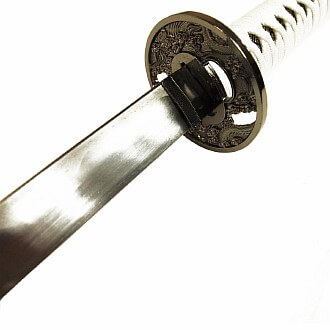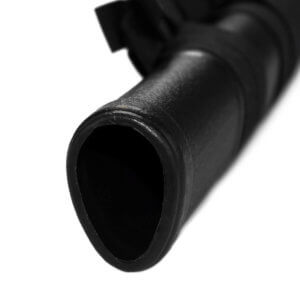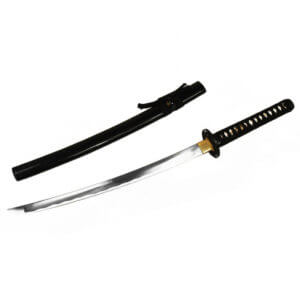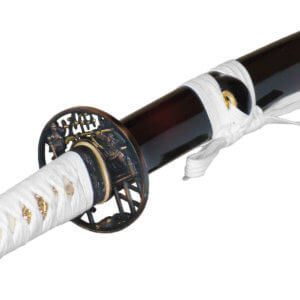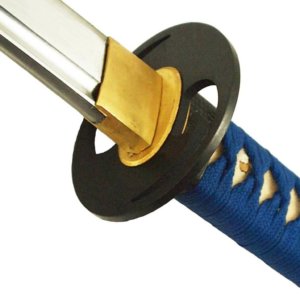There are many obvious differences between decorative swords and swords for active use. Here we deal with the topic of the sword tang on the samurai sword. Here, the differences between decorative swords and "real" swords are so obvious that anyone can recognise them.
The tang on a real samurai sword

Example image including sketch of the structure
As you can see on the example picture, the blade and the tang of the real sword are made of one piece. There is at least 1 hole in the tang. A pin (Mekugi), which holds the blade in the handle.
The tang on a decorative samurai sword

Version for screwing

Version for gluing
The blade of a decorative sword is machined and then the tang is usually welded on. There are 2 procedures for decorative swords:
Variant 1: screwed
Another element with a thread is welded to the end of the tang. The tang goes through the entire sword handle. At the end of the handle, the blade is then tightened with a nut and thus sits securely in the handle.
Variant 2: glued
The rod is slightly shorter. It is firmly glued into the handle.
Conclusion
The blade of a real sword is held in the handle with at least one pin. If this is not the case, it is usually a decorative sword.
A decorative sword should never be actively used, as various unpleasant situations can arise. If the blade itself survives use, a decorative sword is very likely to snap off at the tang, the blade may come loose from the handle, the plastic handle may burst, etc. etc....
In short: decorative swords are really only suitable for decoration.
Finally, a short instructional video about the consequences of mishandling a sword:

